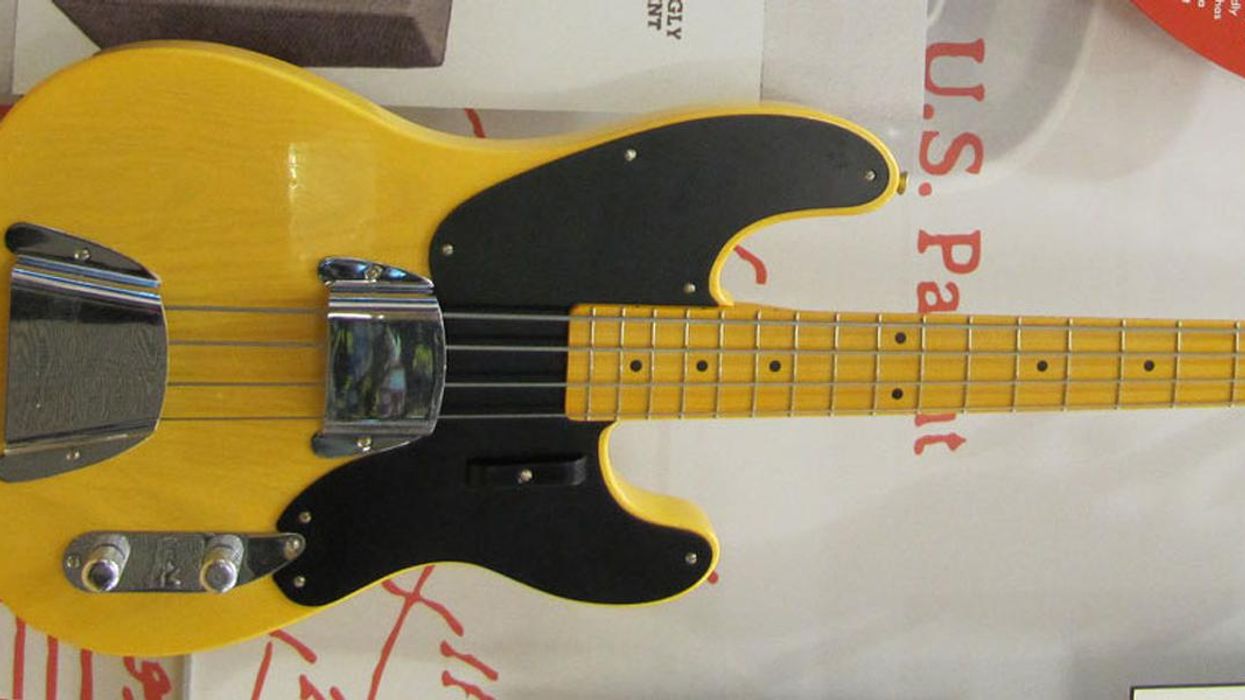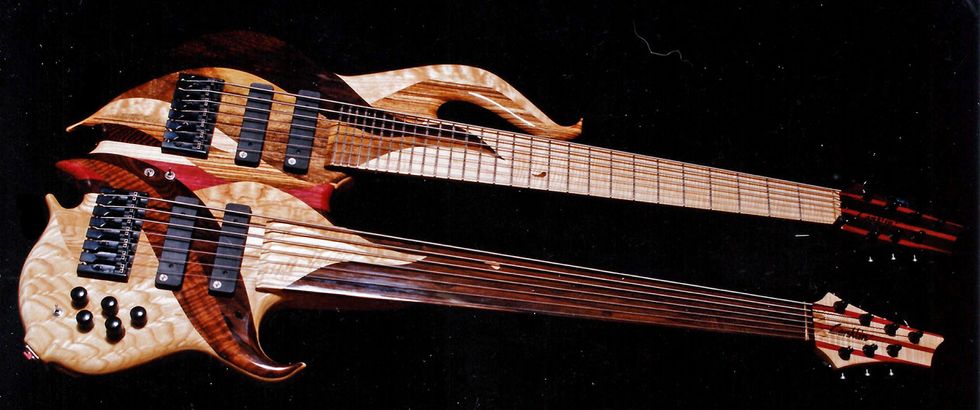No doubt you've heard folks claim that when it comes to gear and instruments, we bassists are more open-minded than our 6-string colleagues, and this willingness to embrace the new has led to the huge variety of bass designs we see today. Of course, both the camps of bassists and guitarists have their share of vintage aficionados, but the percentage is surely higher among guitarists.
The bass initially started as a pumped-up copy of the electric guitar. The primary differences were simply scale length, string diameter, and the size of the tuners, while the functionality and underlying technology of the respective components were identical. If there was any alteration worth mentioning, it might be that we got a thumb rest.
But that's no longer the case—the bass has evolved. If you were to hand most guitarists one of the very first electric 6-strings, they'd typically be good to go. A bassist, however, usually expects something more modern. We bassists tend to applaud our openness to new technology—i.e., we think we're smarter—while guitarists suspect we're simply flaunting our purported technical enlightenment to compensate for an inherently supportive musical role.
supportive musical role.
Much has been written about the different personalities driving those who play bass and guitar, and how their roles differ in a band. Most writers describe the shy bassist standing toward the back of the stage while the guitarist with the long cable or wireless system prances around at the front of the action, egging on the crowd. This exposure is the main reason why more budding musicians are keen to start playing guitar and why the guitar market is so much bigger. Because of this, one would expect a greater technological variety when it comes to guitars, but it's no secret among luthiers that the bass market is more receptive to new products and features, at least when it comes to our instruments and amps. (Of course, we bassists can't compete with the guitar's pedal market, although in recent years we've also seen a growing number of pedals designed exclusively for us.)
The bridge illustrates the bass' evolution. Classic Tune-o-matic and T-style bridges are still widely used on new guitars, and they remain essentially unchanged from their original design. In contrast, most new electric basses sport bridges with saddles that can be individually adjusted in three dimensions and are usually lockable, and these precision wonders are often available in high-mass versions.
Or take pickups: Though the masses have yet to embrace optical pickups, there are many more found on basses. Even though optical pickups are available, guitars outfitted with them remain an absolute rarity.
Not everybody wants more than four strings, but the evolutionary changes of the bass are broad and deep,
and go well beyond looks. Photo courtesy of conklinguitars.com
A bass once had only four strings, but the acceptance of the 5th string started the completely new market of “extended range" basses. And these instruments offer as many strings as you can handle, with the latest known limit being 24. To see a photo of this rare beast, read “Designing a 24-String Bass." And it doesn't stop there: Most extended range instruments have active onboard electronics, as do many 4- and 5-string basses. Compact headless instruments are particularly popular, which is significant when you recall that the electric bass once evolved from the huge upright. All these progressive features are also available on guitars, but they're either less common or relatively new, as one can see from the recent arrival of ergonomic, fanned-fret, headless guitars.
The guitar has always been played either fingerstyle or with a plectrum (and some tapping, later on), but the bass has traveled a longer way from the traditional classical bow or index-and-middle-finger plucking used by jazz greats. The birth of the electric bass led to flatpicking (think Carol Kaye and Anthony Jackson), Larry Graham's pioneering slap 'n' pop, and palm-muting, fingerpicking, and harmonics à la Les Claypool, Pinback's Armistead Burwell Smith IV, and countless other progressive players. Once the number of strings expanded, bassists also began to embrace tapping, and today it's literally no-holds-barred when it comes to bass technique.
While the guitar has always been in the spotlight, the bass has had to work its way out of the dark corner of the stage to claim its rightful place in modern music, and the pace and path of its evolution reflects this journey.












![Rig Rundown: Russian Circles’ Mike Sullivan [2025]](https://www.premierguitar.com/media-library/youtube.jpg?id=62303631&width=1245&height=700&quality=70&coordinates=0%2C0%2C0%2C0)








